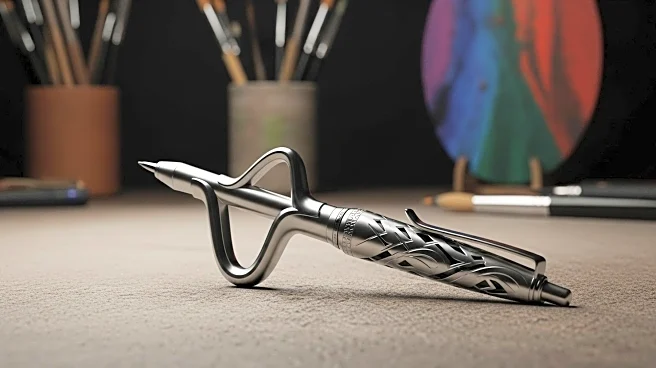What's Happening?
Contemporary artists are challenging traditional notions of calligraphy by using unconventional materials and methods. These artists are discarding traditional tools like brush and ink in favor of light, chemicals, vines, and digital code. Their works preserve the formal language of calligraphy—its structure, rhythm, and expressive intent—while exploring new terrains of cultural memory, ecological reflection, and spiritual inquiry. Notable artists include Yang Jiechang, who uses traditional brushwork to critique globalization, and Li Shun, who captures light trails in urban environments to create calligraphic images. Dong Wensheng experiments with silver halide paper, while Cui Fei uses natural elements to create a 'language of nature.' Song Ta employs gel pens and digital formats to explore contemporary cultural contexts.
Why It's Important?
These innovative approaches to calligraphy reflect a broader cultural shift towards reimagining traditional art forms in contemporary contexts. By expanding the boundaries of calligraphy, these artists are fostering a dialogue between tradition and modernity, allowing for new expressions of cultural identity and artistic freedom. Their work challenges conventional perceptions of calligraphy and highlights its potential as a medium for philosophical and social reflection. This evolution of calligraphy underscores the dynamic nature of cultural heritage and its ability to adapt to changing societal landscapes.
Beyond the Headlines
The use of unconventional materials and methods in calligraphy raises questions about the role of tradition in contemporary art. These artists demonstrate that calligraphy can transcend its historical constraints, serving as a platform for cultural critique and exploration. Their work invites viewers to reconsider the relationship between art, culture, and technology.

